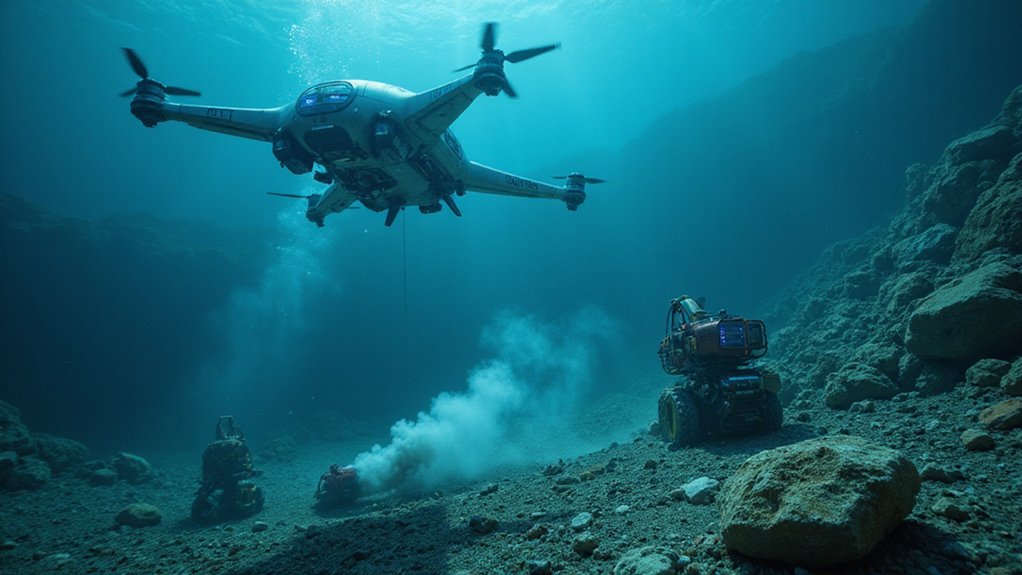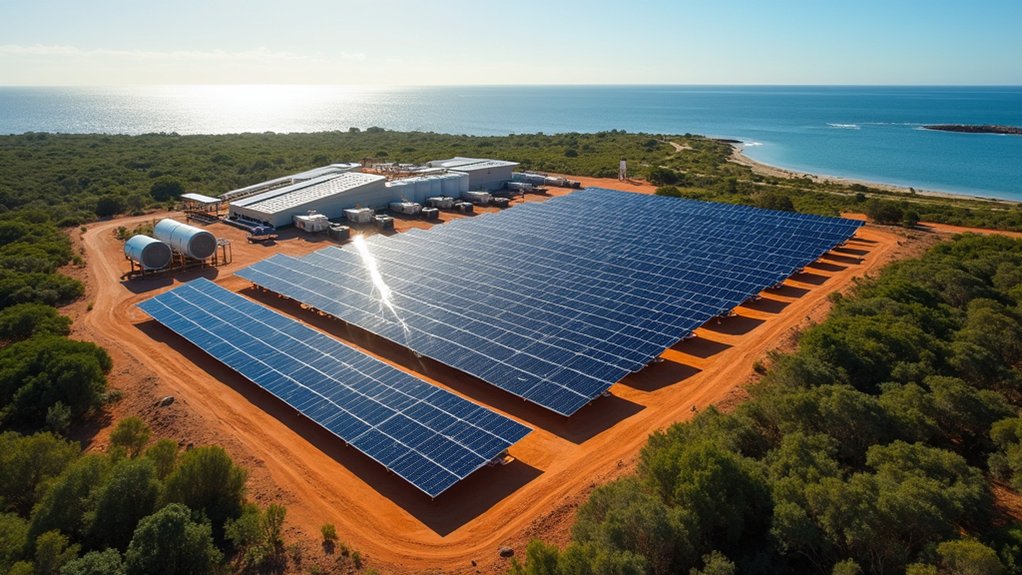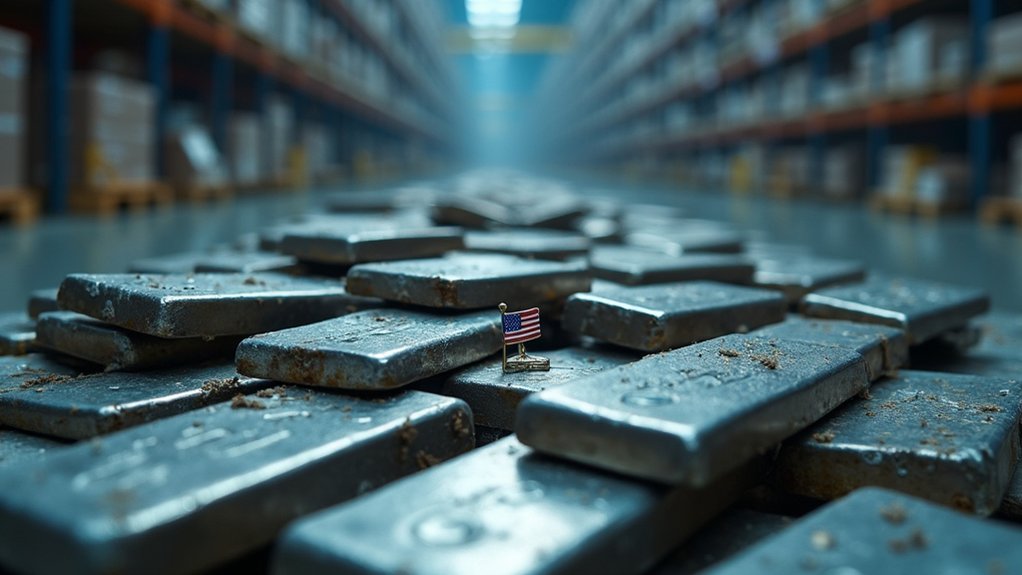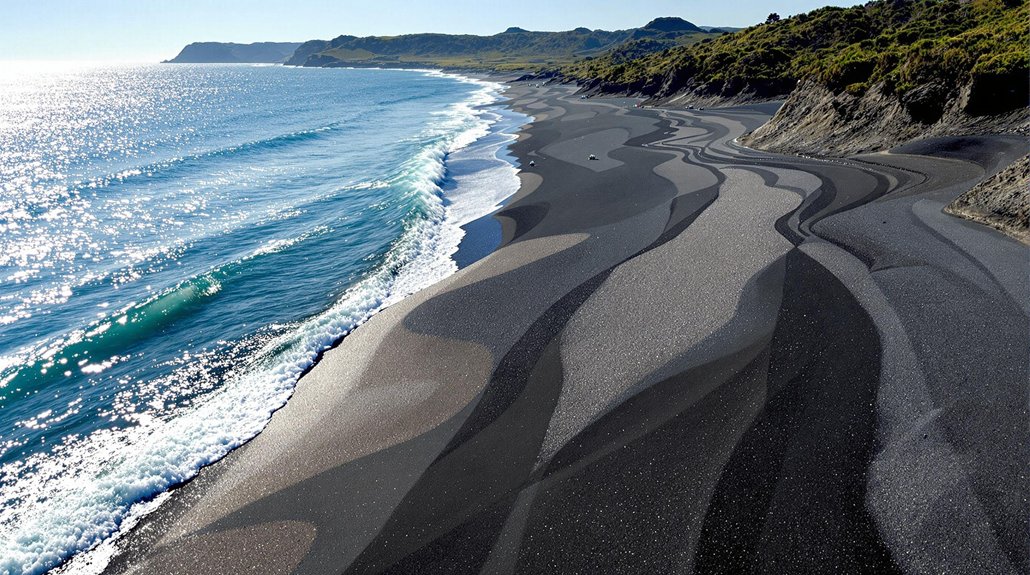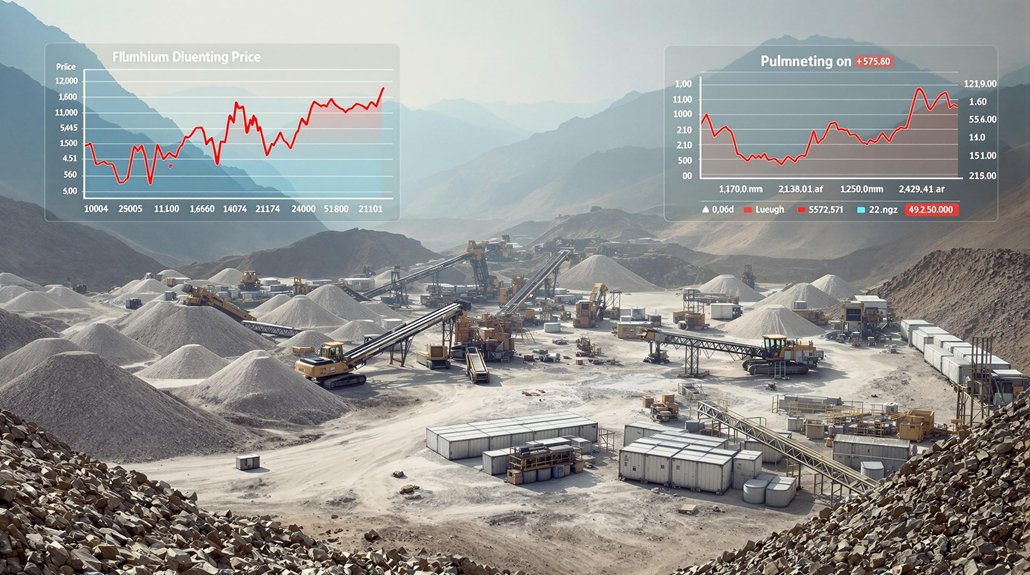The mining industry is ditching pickaxes for algorithms. AI now spots mineral deposits better than humans ever could, while drones and autonomous vehicles reduce worker danger. Companies like Barrick Gold and Rio Tinto are leading this tech transformation, using real-time monitoring to boost efficiency and environmental compliance. Sure, high costs and data security concerns exist—but mining’s shift from brute force to data-driven intelligence is unstoppable. The earth’s resources will never be the same.
While traditional mining conjures images of soot-faced workers and hulking machinery, today’s mineral extraction looks increasingly like science fiction. Mining companies aren’t just digging holes anymore—they’re deploying artificial intelligence to fundamentally transform how we find and extract Earth’s resources. It’s not an exaggeration to say that mining’s entire business model is being reconstructed from the ground up.
AI has become the industry’s new prospector, but instead of a pan and determination, it wields algorithms and data. These systems analyze geological data, satellite imagery, and historical mining data to pinpoint potential deposits with uncanny accuracy. Humans simply can’t compete with a machine’s ability to detect subtle patterns in mineralization. Companies like Barrick Gold are already reaping the benefits, optimizing their drilling operations and slashing exploration costs. Despite significant benefits, the sector has been adopting AI slowly, with high integration costs and data security concerns still presenting obstacles. Sorry, old-timers—your hunches can’t beat an algorithm.
The era of gut feelings is over. In today’s mining, algorithms find what human intuition misses.
Equipment failures at mining sites used to be inevitable disasters. Not anymore. AI predictive maintenance has transformed what was once a guessing game into a science. Systems from companies like ABB Global monitor equipment in real-time, alerting maintenance teams to potential failures before they happen. No more catastrophic breakdowns, no more unnecessary maintenance checks. Just efficient, data-driven decisions that keep operations running smoothly.
Environmental concerns? AI’s handling that too. Real-time monitoring systems track air and water quality, ensuring mining operations stay within regulatory limits while minimizing their footprint. Rio Tinto has established dedicated Centres of Excellence that focus on analytics and energy efficiency across their global operations. The algorithms make hourly predictions and recommendations to operations teams, helping reduce power and water consumption. However, mining operations still risk significant biodiversity decline, similar to the impacts seen with hydropower dams on freshwater ecosystems.
Perhaps most impressive is the rise of autonomous systems in mining. Self-operating machinery and vehicles reduce human exposure to dangerous conditions while operating non-stop. BHP and Microsoft have partnered to boost copper production through AI-driven real-time analysis.
The days of mining being just brute force and luck are over. AI has transformed it into a high-tech industry where data, not dynamite, leads the way to resources. Mining’s future isn’t just below ground—it’s in the algorithms.
References
- https://miningdigital.com/articles/top-10-uses-of-artificial-intelligence-in-mining
- https://www.spglobal.com/market-intelligence/en/news-insights/research/a-peek-at-ai-revolution-in-mining-promise-meets-peril
- https://www.innovationnewsnetwork.com/how-ai-will-revolutionise-the-mining-sector/48054/
- https://mine.nridigital.com/mine_oct24/impact-ai-mining-sector
- https://www.bhp.com/news/bhp-insights/2024/08/artificial-intelligence-is-unearthing-a-smarter-future
